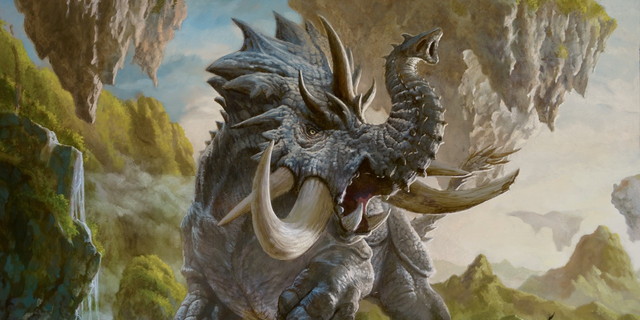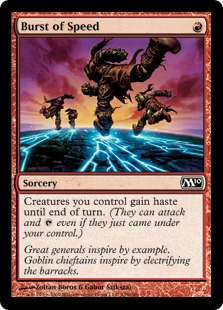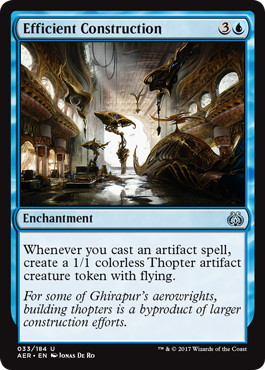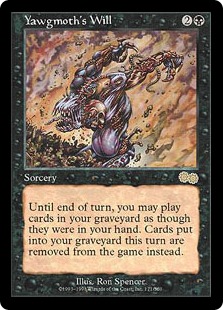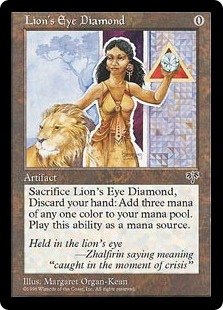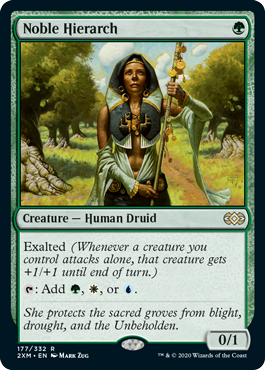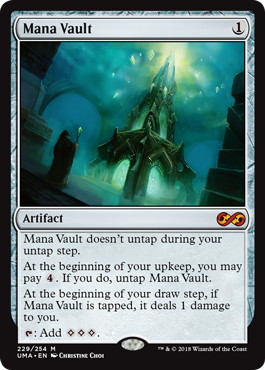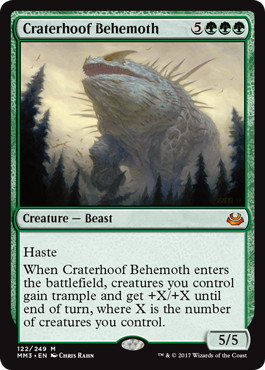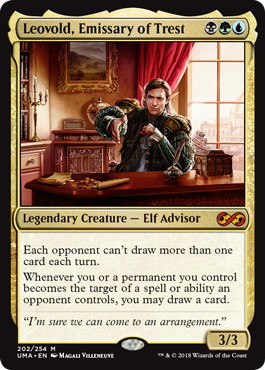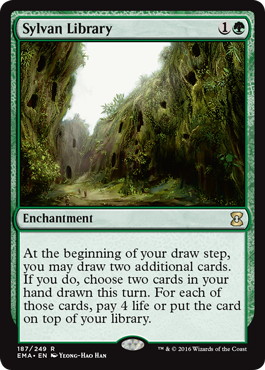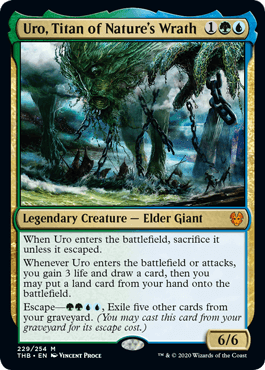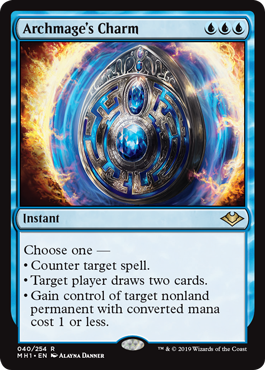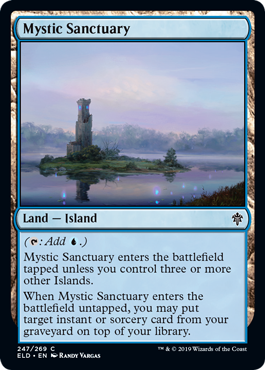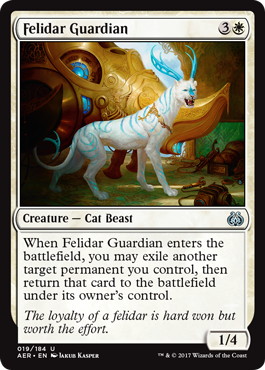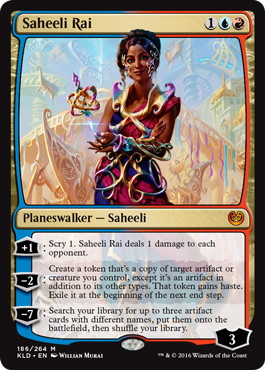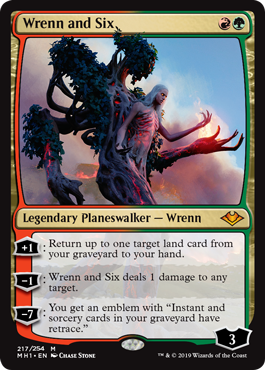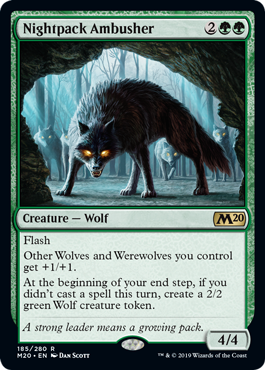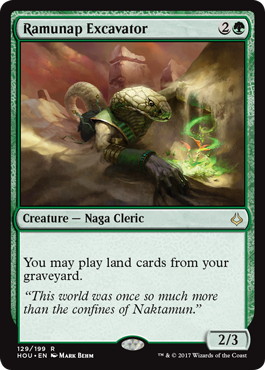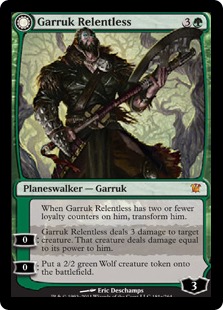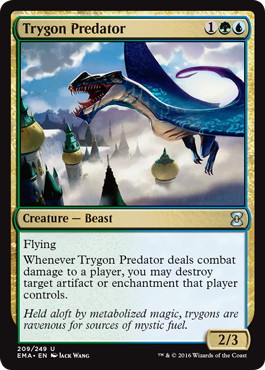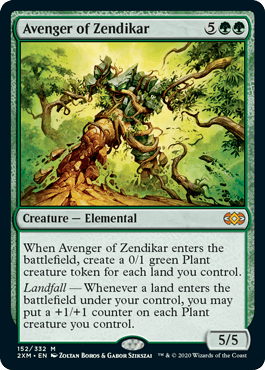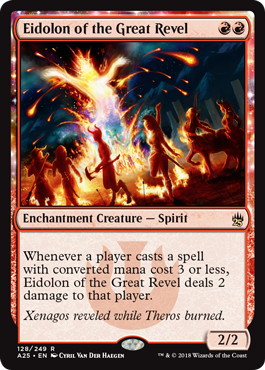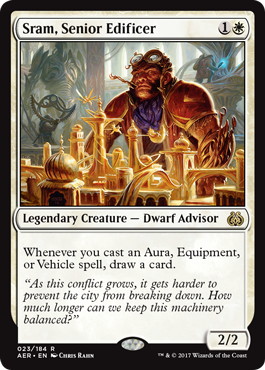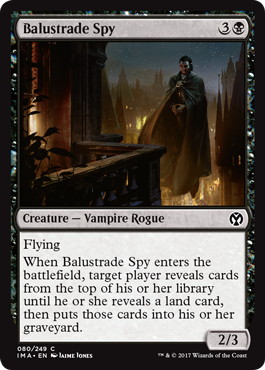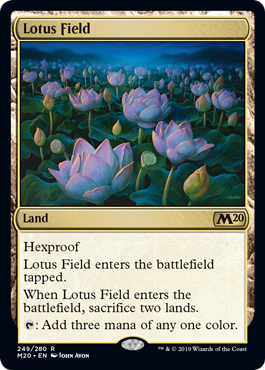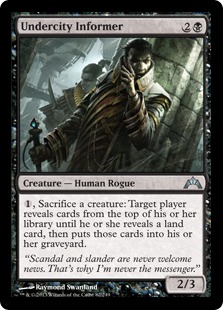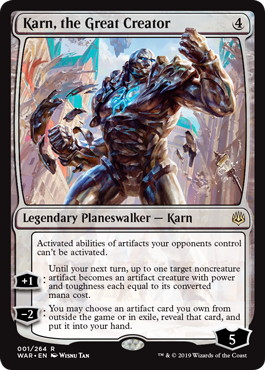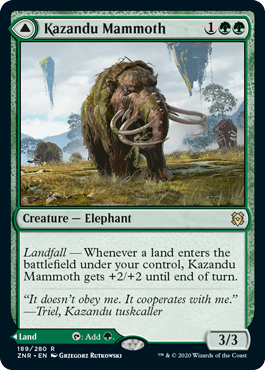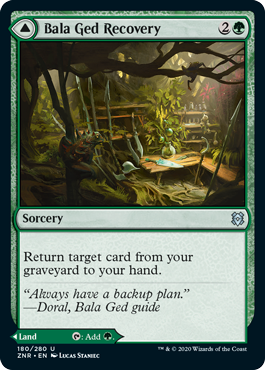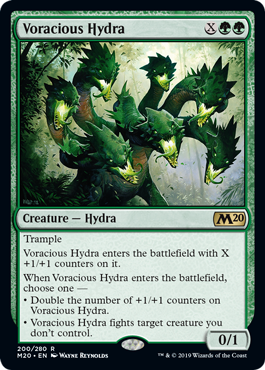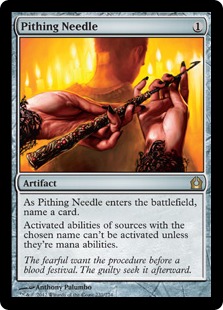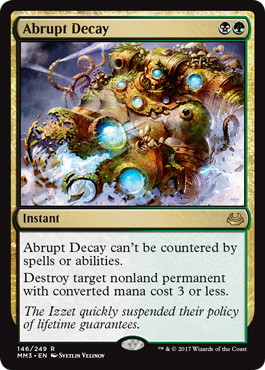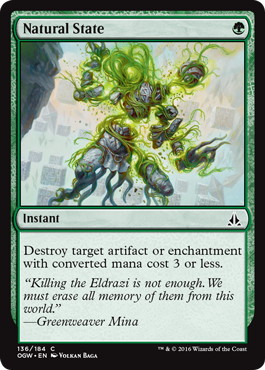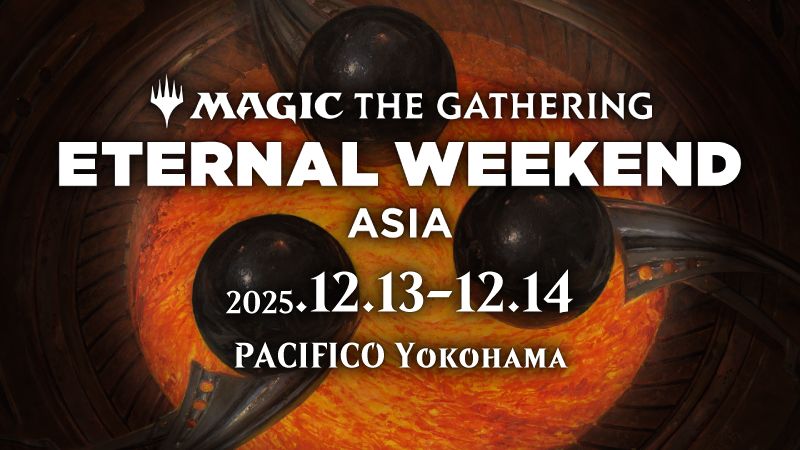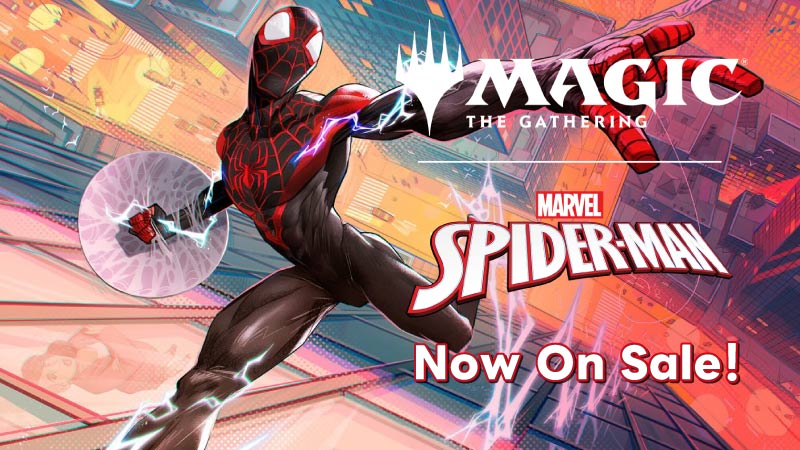Day 1
It’s the middle of November. I try to be relaxed as I walk on the seashore, absorbing in the last rays of a dwindling winter sun and listening to Walter Tevis’ The Hustler on my headphones. Tevis, who has also written Queen’s Gambit (the book upon which the Netflix show is based), has an uncanny ability to describe the mind of a competitive player, but despite the great writing I’m finding it hard to stay focused, let alone relaxed.
The past week has been very stressful. I’ve spent a lot of time preparing for the tournament that’s about to start, but I still feel like I haven’t prepared anywhere near enough. I suppose that’s always going to be the case for triple-format tournaments – there simply isn’t enough time in the world to properly prepare for all of them. Every time I start feeling anxious and inadequate, I have to remind myself that most other players in the tournament are probably having the same problems.
In many ways, I think competitive Magic is like a speed learning or speed researching contest, where time management and optimization skills are of utmost importance. I suspect this is why I have felt a lot more comfortable at work than at my university studies.
As an example, a company might have multiple investment opportunities with a positive expected value, but not enough money or resources to pursue all of them. In such a case, it’s important to identify which opportunities are the best ones. That, to me, feels very similar to practicing for Magic tournaments. Whether you’re investing money into projects or time into decks, the key is to evaluate which prospects are the most likely to yield the best results.
On the contrary, university courses are not at all focused on doing things optimally, or maximizing learning while minimizing studying. I have often found myself in a grey lecture hall listening to a grey-haired professor talking with a grey monotone voice about grey things and wondering “Who is this useful for?”
Teaching is often organized so that nobody is left behind, which is not necessarily a bad principle. However, it makes the process woefully inefficient for some of the students.
There’s a common saying at least in Finland that the most important skill you learn in higher education is that you “learn to learn”, which I don’t think the university system or its outdated educational methods actually teach you very well. If there is a thing in life that has taught me to learn, it is definitely not school, but preparing for Magic tournaments.
Anyway, after I walk back home and sit down in front of my computer, the most important tournament of my life, The Magic Online Championships, begins. With 24 players and a $250 000 prize pool, it’s easily the highest-level tournament I’ve ever played in.
Vintage Cube Draft
I’m glad that it starts off with the format I’m the most comfortable with: Vintage Cube. Not only is it the format that I enjoy the most playing, it is also the only one where I actually feel like I have an edge over the other competitors even in such a tremendously skilled field.
According to statistics published before the tournament, I have one of the highest win rates in Cube out of the competitors, which I was frankly rather surprised by, because I feel like I fool around a lot whenever I draft it. Basically, I draft with a lot of self-imposed restrictions. When I’m drafting for fun, I’m practically never drafting an aggressive deck or Green ramp – instead I’m usually forcing multicolor control monstrosities or 《Thousand-Year Storm》 combo decks. My friends and I have also done a bunch of “lock drafts”, where one of us streams a draft and each viewer has a right to “lock down” a pick and force the player to choose a specific card once per draft. The locked card also has to be main decked if at all possible. This makes for some, uh, “creative” drafting…
When the draft finally launches, I’m beyond excited as I open up a 《Black Lotus》 and get to follow it up with a 《Yawgmoth’s Will》 and a 《Lion’s Eye Diamond》 – an absurdly good start for a Storm deck. It’s hard for me to even imagine a better opening. However, my excitement is quickly halted as the draft is canceled by the admins for coverage purposes, and then relaunched.
After the restart, I first pick a 《Noble Hierarch》 out of an unexciting pack, following it up with a 《Mana Vault》 and a 《Rofellos, Llanowar Emissary》. This is a very typical start when my main goal is to win instead of having fun. Basically, I think producing fast mana is more important than whatever you’re doing with it. That’s why, when drafting to win, I often end up drafting some kind of a Green deck, as it’s quite easy to pick up a bunch of mana dorks.
After the accelerators, I get a 6th pick 《Craterhoof Behemoth》, which is by far the best Green creature to ramp into and a decent signal that Ramp is open. While it’s not the Storm deck I was hoping for, it’s an archetype with one of the highest expected win rates. At least I get to pick up a 《Mind Twist》, a 《Leovold, Emissary of Trest》 and a 《Sylvan Library》 to make it a bit more fun. On a side note, I think 《Sylvan Library》 is one of the most underrated cards in Cube and regularly goes later than it should.
I’m mostly happy with the deck, but having zero pieces of Power 9 and very little disruption is definitely not the best place to be in.
- Matti Kuisma
- – Green Ramp
- 2019 Magic Online Championship
- (Vintage Cube Draft)
1 《Island》
1 《Swamp》
1 《Prismatic Vista》
1 《Bayou》
1 《Tropical Island》
1 《Windswept Heath》
1 《Wooded Foothills》
-Land (15)- 1 《Arbor Elf》
1 《Avacyn’s Pilgrim》
1 《Fyndhorn Elves》
1 《Hexdrinker》
1 《Joraga Treespeaker》
1 《Noble Hierarch》
1 《Devoted Druid》
1 《Lotus Cobra》
1 《Rofellos, Llanowar Emissary》
1 《Sakura-Tribe Elder》
1 《Sylvan Caryatid》
1 《Leovold, Emissary of Trest》
1 《Tireless Tracker》
1 《Polukranos, World Eater》
1 《Acidic Slime》
1 《Whisperwood Elemental》
1 《Craterhoof Behemoth》
1 《Woodfall Primus》
-Creature (18)-
1 《Mind Twist》
1 《Sylvan Library》
1 《Mana Vault》
1 《Sword of Fire and Ice》
1 《Garruk Wildspeaker》
1 《Karn Liberated》
-Spell (7)-
1 《Kitchen Finks》
1 《Knight of Autumn》
1 《Knight of the Reliquary》
1 《Pestermite》
1 《Rotting Regisaur》
1 《Shriekmaw》
1 《Nature’s Claim》
1 《Primal Command》
1 《Land Tax》
1 《Oath of Druids》
1 《Thousand-Year Storm》
1 《Smokestack》
1 《Sword of Feast and Famine》
1 《Field of Ruin》
-Sideboard (15)-
After rattling up two quick wins against Lars Dam and Yutaro Yamagata, I face off against Logan Nettles a.k.a. Jaberwocki in the finals of the feature pod. The match can be seen here. He casts a whole bunch of 《Time Walk》s and manages to take the match in three games. I think my deck was a bit stronger in a vacuum but the matchup definitely favored him.
Modern
After the draft we move on to Modern, in which I’m playing Temur Uro. Some readers might be surprised that I’m not playing Dredge, but I don’t think the deck is very well positioned at the moment. 《Uro, Titan of Nature’s Wrath》, on the other hand, is a messed up card and I realized early on in testing that the various Uro decks seem better than anything else the format has to offer. The only remaining question was which one I wanted to play.
The three traditional options are 4-color Uro with 《Omnath, Locus of Creation》s, Sultai Uro with 《Mystic Sanctuaries》, and CopyCat with 《Felidar Guardian》s and 《Saheeli Rai》s. Which one is best depends a lot on the metagame, and in the end we ended up picking a deck that is somewhere between the three of those.
I personally liked playing the most with Sultai Uro, because 《Archmage’s Charm》 and 《Mystic Sanctuary》 let you play a great draw-go game. However, it is also by far the most reactive out of those decks and doesn’t play cards that are individually as powerful as 《Wrenn and Six》 or 《Teferi, Time Raveler》. 《Wrenn and Six》 in particular can sometimes dominate a game alone and let you win even from something like a mulligan to 4. As Allen Wu said in his article, it’s important for a deck to play good cards.
The CopyCat deck, on the other hand, was appealing because it had by far the strongest proactive plan. The combination of 《Wrenn and Six》, 《Teferi, Time Raveler》, Uro and a combo finish out of nowhere is scary to play against. And while all variants play 《Veil of Summer》 and 《Mystical Dispute》 in the sideboard, both of them are definitely at their best in the CopyCat deck where you can use them to push through your powerful haymakers. It’s not too hard to set up something like a Teferi backed up by Veil and Dispute, which is often backbreaking against the more controlling Uro decks. For these reasons, CopyCat was my backup deck for the tournament.
At some point, we decided to try changing the Black cards in Sultai Uro to Red ones to gain access to 《Wrenn and Six》. While the planeswalker itself was a fantastic fit for the deck and gave it a significant boost in pure power, there were definitely some costs included as well. In many matchups, 《Lightning Bolt》 was a downgrade from 《Fatal Push》 and the Red version had an even harder time dealing with a resolved planeswalker because it had neither 《Bloodchief’s Thirst》 nor 《Abrupt Decay》. Some of the aggro matchups felt worse as well due to not having as many good 1 mana removal spells.
If it hadn’t been for some last-minute innovations, I think I would’ve most likely ended up playing CopyCat. But as we were testing the various Uro mirrors, we decided to give 《Nightpack Ambusher》 and 《Shark Typhoon》 a go. It quickly became apparent that they were exactly what the deck needed. They didn’t fix ALL of the problems, but they fixed a lot of them.
First of all, the 《Mystic Sanctuary》 variants can’t ever really afford to tap out because the other versions can simply do stronger stuff than the Sanctuary version can. For that reason, Uro itself is a rather poor card from the Sanctuary side of things, so the deck becomes very reliant on 《Field of the Dead》s and 《Cryptic Command》s to pull ahead. Having access to 《Nightpack Ambusher》 and 《Shark Typhoon》 gave the deck some great flash threats to replace most of your Uros in post-board games. Typhoons especially are impossible to deal with effectively.
Another reason was that those two cards were excellent at dealing with opposing planeswalkers. As I noted before, planeswalkers were a lot more problematic for the Red version. The flash threats completely changed that, however, because with those it was actually hard for the opponent to protect their value engine.
The 《Nightpack Ambusher》 in particular does a lot of work against both aggro and combo decks, as it is quite hard to punch through for aggro and a very quick clock against combo. Previously, the combo decks could just durdle around for ten turns and set up a perfect hand, but the pressure from Ambushers gave them very little time to do that. Against something like Humans, Ambushers are also a perfect complement to your sweeper effects, as they force the opponent to overextend to the board.
- Matti Kuisma
- – Temur Uro
- 2019 Magic Online Championship
- (Modern)
1 《Mountain》
1 《Forest》
1 《Snow-Covered Island》
1 《Ketria Triome》
2 《Breeding Pool》
1 《Steam Vents》
1 《Flooded Strand》
4 《Misty Rainforest》
4 《Scalding Tarn》
1 《Polluted Delta》
1 《Sulfur Falls》
1 《Waterlogged Grove》
2 《Mystic Sanctuary》
1 《Lonely Sandbar》
2 《Field of Ruin》
2 《Field of the Dead》
-Land (29)- 4 《Uro, Titan of Nature’s Wrath》
-Creature (4)-
2 《Spell Snare》
2 《Growth Spiral》
2 《Mana Leak》
1 《Abrade》
1 《Remand》
4 《Archmage’s Charm》
3 《Force of Negation》
3 《Cryptic Command》
1 《Shark Typhoon》
3 《Wrenn and Six》
1 《Jace, the Mind Sculptor》
-Spell (27)-
2 《Nightpack Ambusher》
2 《Veil of Summer》
2 《Engineered Explosives》
1 《Fry》
1 《Firespout》
1 《Mystical Dispute》
1 《Shark Typhoon》
1 《Soul-Guide Lantern》
1 《Ashiok, Dream Render》
-Sideboard (15)-
My deck choice is rewarded, as I get a clean 4-0 sweep in the Modern portion, with 《Nightpack Ambusher》s playing a pivotal role in many games. Highlights are a match against Logan Nettles (again), where I manage to beat a 《Liliana of the Veil》 ultimate and a 《Boil》, and the last match of the day against Oliver Tiu, who compliments me on good metagaming as my sideboard plan overpowers his 4-color Uro/Omnath deck in the pseudo-mirror. I would also like to express my thanks to Logan for sticking to Jund for this event, as I’m sure it would’ve been a lot harder to beat him if he didn’t handicap himself by playing a deck that hasn’t been good since 《Deathrite Shaman》 got banned.
Day 2
Vintage Cube Draft
The second day of competition starts off with a Cube draft as well. To the surprise of absolutely no one, I end up drafting Green Ramp for a second time. I tried to go for a control deck after kicking things off with a 《Counterspell》 and an 《Oko, Thief of Crowns》, but the packs don’t really have any non-Green cards so I reluctantly accept my fate. At least I have a 《Strip Mine》 and a 《Ramunap Excavator》 for a sweet little disruption package.
One thing that I should note is that I knew that the pairings would go by standings and after some Twitter drama and retroactively changed results on day 1, Michael Jacob was the only other person at a 6-1 record. I also had been told that MJ prefers to draft White and Red aggressive decks if possible, so I changed my drafting slightly to prioritize anti-aggro sideboard cards higher than usual.
- Matti Kuisma
- – Green Ramp
- 2019 Magic Online Championship
- (Vintage Cube Draft)
3 《Island》
1 《Mountain》
1 《Prismatic Vista》
1 《Stomping Ground》
1 《Strip Mine》
-Land (16)- 1 《Avacyn’s Pilgrim》
1 《Birds of Paradise》
1 《Noble Hierarch》
1 《Devoted Druid》
1 《Lotus Cobra》
1 《Sylvan Caryatid》
1 《Ramunap Excavator》
1 《Trygon Predator》
1 《Deranged Hermit》
1 《Avenger of Zendikar》
1 《Dragonlord Atarka》
1 《Myr Battlesphere》
1 《Terastodon》
-Creature (13)-
1 《Tinker》
1 《Natural Order》
1 《Everflowing Chalice》
1 《Mox Pearl》
1 《Mana Vault》
1 《Worn Powerstone》
1 《Dack Fayden》
1 《Oko, Thief of Crowns》
1 《Garruk Relentless》
1 《Garruk Wildspeaker》
-Spell (11)-
1 《Kitchen Finks》
1 《Nissa, Vastwood Seer》
1 《Rampaging Ferocidon》
1 《Tireless Tracker》
1 《Bloodbraid Elf》
1 《Huntmaster of the Fells》
1 《Pia and Kiran Nalaar》
1 《Baneslayer Angel》
1 《Kuldotha Forgemaster》
1 《Counterspell》
1 《Incinerate》
1 《Remand》
1 《Finale of Devastation》
1 《Beast Within》
1 《Fiery Confluence》
1 《Thousand-Year Storm》
1 《Freyalise, Llanowar’s Fury》
-Sideboard (22)-
Our match was the main feature match of round 8, and it can be seen here. Apparently MJ’s draft had been somewhat rough, and I had some of my better openings, so the games aren’t particularly close – especially after Michael makes a greedy attack in game 2 with a 《Mother of Runes》 and gets punished hard for his choice as I have a 《Mana Vault》 to ramp into a turn 2 《Garruk Relentless》 to kill it.
The next two matches are some of the best matches I’ve played in a long time. Round 9 I face off against Logan Nettles for a third time and he has again drafted a Blue control deck, and our third game is insane. At some point I feel like I’m pretty far ahead as I get to cast a 《Terastodon》, and I get to choose between destroying his 3 White lands, his 3 Blue lands, or 3 of my own lands to put on maximum pressure. I end up denying him from White mana, but he draws more and gets rid of my 《Terastodon》 and suddenly I’m being pressured by an army of Elephants.
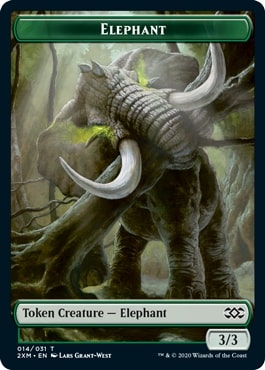


After trading threats and answers for a long while, we both have about 10 cards left in our libraries. I have a better board but my remaining cards are all very low impact. However, he finally runs out of gas and is forced to Aftermath his 《Commit/Memory》, which fills my deck with threats again. The 8 cards that I draw give me a way to clear out his blockers and force a lethal attack.
The final match of the draft can be seen here. I’m up against Juan Jose Rodriguez Lopez, a.k.a. pacoelflaco, with Reanimator. This is traditionally a poor matchup for Green decks, as the good Reanimator draws, especially those with 《Entomb》, tend to be faster than whatever Green is doing. Reanimator is more fragile as well, for sure, and more susceptible to hate cards, but most Green decks don’t really have good ways to punish them for that.
Games 1 and 2 are fairly one-sided, but our game 3 is another wild ride. I pump my fist as I see an opener with 《Mana Vault》, 《Ramunap Excavator》 and 《Strip Mine》 for a quick recursion lock, which is one of my few good ways of actually disrupting his deck, but Juan manages to get out of that fairly quickly. After a while he has 《Necromancy》 and 《Animate Dead》 in hand but they are kept in check by my 《Trygon Predator》 (another underrated work horse).
Eventually he decides to go for a cool play of animating my 《Terastodon》 twice, blowing up the animating Aura each time to generate a horde of Elephants. However, I manage to finally get an 《Avenger of Zendikar》 into play and he can’t attack because I would have a lethal counterattack back. After letting my plants grow a bit, I get a wide enough board to be able to strike for lethal damage through the sea of 3/3 blockers.
Pioneer
This leaves me at a comfortable 9-1 record going into the Pioneer portion, which is a relief since I’m actually a bit scared of the Pioneer matches. I would like to say that I had clear plans for testing the format like I had with Modern, but the truth is the complete opposite. I bounced around aimlessly between a bunch of different decks trying to find something I didn’t hate, but I got my ass kicked regardless of what I was playing. The only decks with which I had decent results were Oops All Spells and some 4-color Yorion homebrews.
One of the problems in Pioneer is that almost all of the answers are very situational and matchup dependent, and the proactive decks attack from very different angles. Burn, Black-White Auras, Oops All Spells and Lotus Field Combo all require very different tools to beat. Thus, being a reactive deck felt like a recipe for disaster, which was one of two reasons why I ultimately discarded the Yorion decks, even though they were a lot of fun to play and you could build them to beat anything you wanted to beat. The other reason is that there simply wasn’t enough time to tune an optimal list.
On a side note, I think the feeling of being able to beat anything you want is often a huge trap – it is very easy to confuse it with being able to beat everything, which is a completely different situation. In most cases, if you bow to one direction, you’re gonna show your rear to the other, so to speak.
In the end, I chose Oops All Spells. It’s not a deck that I would play in pretty much any other tournament, as I think I get more of an edge by playing something more interactive in fields where I expect to be better than my average opponent.
However, I have a lot of respect for all the competitors at the MOCS, and I don’t think I’ll be able to outplay someone like Christoffer Larsen or Oliver Tiu. I do believe Oops is slightly advantaged in a lot of matchups, so I was fine with flipping weighted coins against players who are at least as good or better than I am. This is very close to the logic that Dmitriy Butakov used a couple of years ago when he won the same tournament.
- 2018/03/14
- How to Choose the Deck: Predator or Prey
- Dmitriy Butakov
Another small factor was that the tournament would be played late at night European time, so it’s honestly kind of nice to play quick matches with a simple deck. I also believe that the most important skill with Oops is mulliganing, which I think I’m pretty good at. Years of playing Dredge have been great practice for pressing the mulligan button aggressively.
- Matti Kuisma
- – Oops! All Spells
- 2019 Magic Online Championship
- (Pioneer)
4 《Sylvan Caryatid》
4 《Tangled Florahedron》
1 《Narcomoeba》
4 《Kazandu Mammoth》
4 《Prized Amalgam》
4 《Undercity Informer》
3 《Silversmote Ghoul》
4 《Balustrade Spy》
1 《Haunted Dead》
2 《Worldspine Wurm》
-Creature (35)-
2 《Duress》
1 《Vastwood Fortification》
4 《Neoform》
4 《Bala Ged Recovery》
4 《Eldritch Evolution》
4 《Pelakka Predation》
4 《Agadeem’s Awakening》
4 《Creeping Chill》
4 《Hagra Mauling》
1 《Driven/Despair》
4 《Sea Gate Restoration》
4 《Turntimber Symbiosis》
-Spell (44)-
3 《Leyline of the Void》
3 《Pithing Needle》
2 《Duress》
2 《Natural State》
1 《Reclamation Sage》
-Sideboard (15)-
For what it’s worth, I expected the metagame to have more control decks and 《Niv-Mizzet Reborn》 decks in this tournament than there ended up being. In a normal metagame I would not play main deck 《Duress》.
This time the matches aren’t very interesting, so I won’t go into too many details. I’ll just say that I won a lot of die rolls, pressed the mulligan button like it was a slot machine, and got rewarded with a bunch of turn 3 《Balustrade Spies》. I went 3-1 in the Pioneer portion, but I think I already secured top 4 with the first win, so the pressure was off after that. Beating Logan Nettles in our 4th match of the weekend was nice though. In the last round I try to knock out Michael Jacob from the top 4, but unfortunately all the other players at X-5 lose their matches as well, and Michael makes the top 4 on tiebreakers.
At the end of day 2, Yutaro Yamagata (myyamagat), for whom the tournament started around midnight and ended around noon, is asking in the MOCS Discord if people are up for more Cube drafting, and I can’t help but smile and respect his love for the game. What a hero!
Day 3
As I wait for the top 4 match to start, I find it hard to eat and impossible to relax no matter what I do. I spend about 4-5 hours during the day testing my quarterfinal matchups against Michael Jacob’s decks, and the results aren’t promising.
- Michael Jabob
- – Heliod Company
- 2019 Magic Online Championship
- (Modern)
2 《Plains》
1 《Prismatic Vista》
4 《Temple Garden》
4 《Windswept Heath》
2 《Misty Rainforest》
3 《Horizon Canopy》
1 《Pendelhaven》
1 《Gavony Township》
-Land (22)- 2 《Walking Ballista》
4 《Arbor Elf》
1 《Giver of Runes》
4 《Conclave Mentor》
2 《Auriok Champion》
2 《Scavenging Ooze》
1 《Spellskite》
4 《Heliod, Sun-Crowned》
4 《Spike Feeder》
3 《Ranger-Captain of Eos》
1 《Skyclave Apparition》
-Creature (28)-
3 《Veil of Summer》
2 《Skyclave Apparition》
2 《Path to Exile》
1 《Giant Killer》
1 《Auriok Champion》
1 《Aven Mindcensor》
1 《Eidolon of Rhetoric》
1 《Celestial Purge》
-Sideboard (15)-
On paper I thought my Modern matchup against Green-White Heliod seemed good, but in practice it feels hard. The package of 《Veil of Summer》, 《Collected Company》, combo kills, indestructible 《Heliod, Sun-Crowned》s and good answers for my threats make it hard for me to deal with all the threats effectively. The ways in which I usually grind an advantage – 《Wrenn and Six》 and Uro – seem ineffective.
- Michael Jabob
- – Mono-Green Planeswalkers
- 2019 Magic Online Championship
- (Pioneer)
2 《Hashep Oasis》
4 《Nykthos, Shrine to Nyx》
-Land (21)- 4 《Elvish Mystic》
4 《Llanowar Elves》
4 《Burning-Tree Emissary》
4 《Voracious Hydra》
2 《Llanowar Visionary》
2 《Elder Gargaroth》
-Creature (20)-
4 《Wolfwillow Haven》
4 《Karn, the Great Creator》
4 《Vivien, Arkbow Ranger》
3 《Nissa, Who Shakes the World》
-Spell (19)-
1 《Stonecoil Serpent》
1 《Scavenging Ooze》
1 《Verdurous Gearhulk》
1 《Ulamog, the Ceaseless Hunger》
1 《Tormod’s Crypt》
1 《Grafdigger’s Cage》
1 《Pithing Needle》
1 《Damping Sphere》
1 《Heart of Kiran》
1 《Aligned Hedron Network》
1 《Orbs of Warding》
1 《Skysovereign, Consul Flagship》
1 《God-Pharaoh’s Statue》
1 《The Great Henge》
-Sideboard (15)-
The Pioneer matchup feels slightly favored, with die roll being a huge factor. Almost all of the games are complete blowouts in one direction or the other, and there’s not a whole lot of interaction.
His Mono-Green Devotion deck is unusual in the sense that it is one of the few decks that can actually stop you with hate cards even in game 1 thanks to 《Karn, the Great Creator》, but they don’t get too many additional ones from sideboarding, since, well, they don’t really have one.
The top 4 structure is best of 3 matches – meaning one match of each Modern and Pioneer, and if match 3 is required, the higher seed gets to choose the format. You can watch our match here.
All of my worries and anxieties disappear when the match starts. That’s what I love about competitive Magic – the total immersion, the clarity, the focus. There’s only one thing in front of me, and for a brief moment in time I forget about everything else. A requirement of being “in the zone” or in a flow state is that you face challenges that match your skills, and at a high-level tournament you really have to bring your A-game to succeed. The opponents are merciless and will exploit every mistake you make, so you can’t afford to make any.
I win the first game of the Modern match as Michael has a whole squad of Heliod’s stuck in his hand, but he takes the next two with good draws from his deck paired up against mediocre ones from mine. I also make a couple of small mistakes, which doesn’t exactly help.
We move on to Pioneer, where I get to be on the play, so I’m feeling good about the match. I win the first game easily, as my deck does what it’s designed to do. If I go off on turn 3 on the play, Michael’s deck can’t really stop me outside of incredible nut draws.
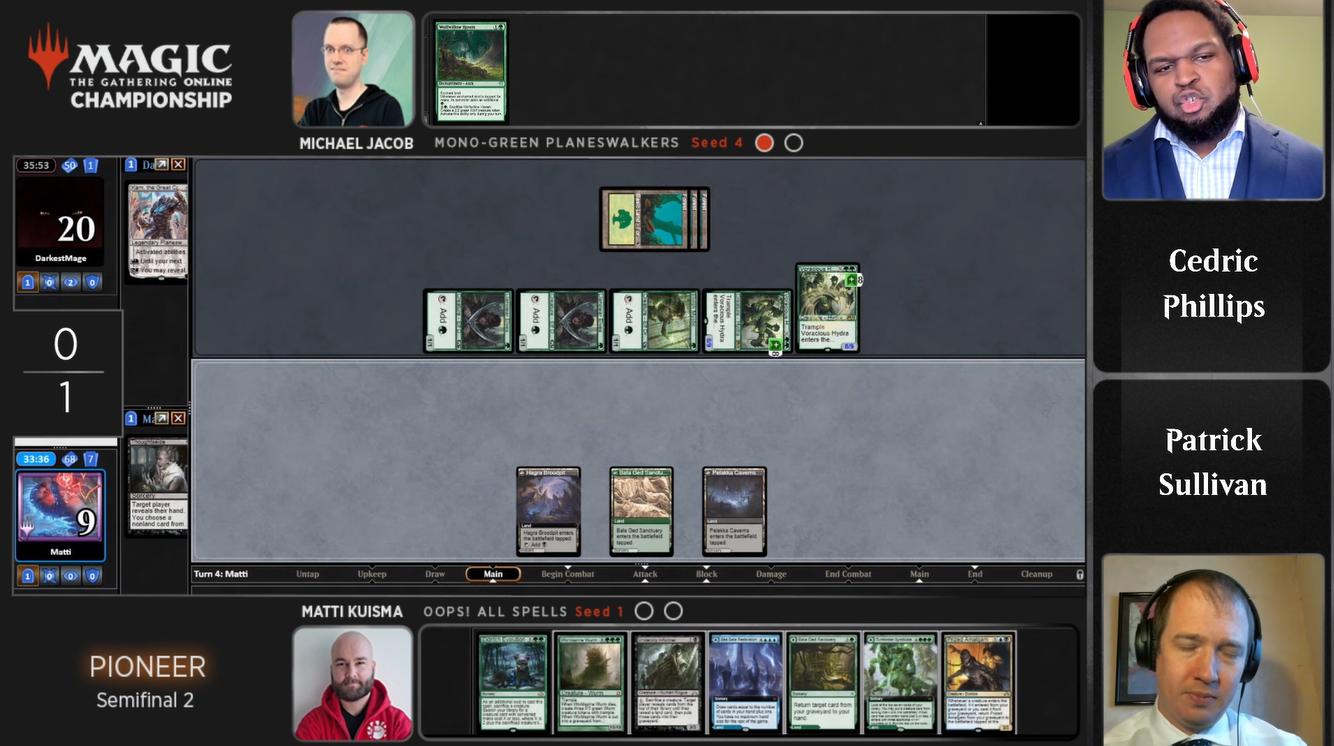
Game 2 board state (Quoted from Magic Twitch channel)
Game 2 I get to 《Thoughtseize》 his Karn and I could go off on turn 4, but it’s not enough. If I go for it, I gain 12 life from 《Creeping Chill》s to go up to 18 life, and I have 1 《Narcomoeba》 available as a blocker, but he has 19 power in play with trample, so he has exact lethals. I do a nervous recount of the math like 10 times to make sure I’m not crazy or missing anything, and decide to concede instead of milling my deck so he doesn’t see how I sideboard.
In the third and deciding game, I have one of the hardest mulligan decisions of my life. I am on the play, at 6 cards, my opponent has kept a 7, and my hand is this:
At first glance, this hand looks like a clear keep, as it has an accelerator (《Tangled Florahedron》), a kill card (《Undercity Informer》) and a sufficient amount of lands. However, there are quite a few things that make the hand worse than it seems:
On the plus side, there are decent amounts of possible draws that make this hand good. An untapped land (11 remaining) or an 《Eldritch Evolution》 (4 remaining) gives me a turn 3 kill, and 《Thoughtseize》, 《Pithing Needle》 and 《Pelakka Predation》 (a total of 10 remaining) can disrupt the turn 3 Karn.
This gives me about a 37% chance to go off on turn 3, and a reasonable chance of drawing some form of disruption for Karn to make a slower kill possible. Of course, that 37% is easily disrupted by 《Voracious Hydra》 or 《Pithing Needle》.
Unlike some have speculated, I haven’t boarded in any 《Abrupt Decay》s or 《Natural State》s to destroy a hate piece fetched by Karn – I think it’s much better to either try to kill as fast as you can or prevent the activation in the first place with 《Thoughtseize》 or 《Pithing Needle》, especially since Karn can just fetch a second hate piece on the following turn.
What would you do?
If you have watched the match, you already know that I end up mulliganing the hand. I can’t really back this up with exact math as I don’t have Karsten-like powers in that area, but my intuition says that I get better odds by trying to mulligan for a better hand. 5- and 4-card hands can have guaranteed turn 3 kills, and even some 3-card hands have decent odds of getting there.
Anyway, the decision is very close and keeping it might have been correct. If it had been a 《Sylvan Caryatid》 instead of 《Tangled Florahedron》, I would’ve definitely kept it.
As fate would have it, I don’t find what I need and I lose the game without casting a single spell.
I’m not sad or mad about it though, games like that are what I signed up for when I submitted the deck. I had a pretty good run regardless, played mostly well throughout the weekend, lost to a deserving winner, had a chance to play my favorite format in a high-stakes tournament, and ended up with $15000 in winnings.
I’ve had worse weekends than that.
Until next time,
Matti(Twitter)


